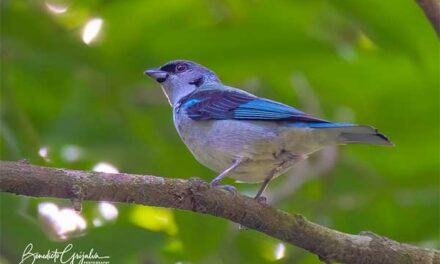Photo gallery for the White-fronted Parrot
White-fronted Parrot (Amazona albifrons)
Species: White-fronted Parrot (Amazona albifrons)
Family: Psittacidae
Distribution: This Parrot is primarily found in Central America’s tropical and subtropical regions.
Habitat: It prefers various habitats, including forests, mangroves, and agricultural areas. This adaptability has helped the species survive in a range of environmental conditions. It can be found at elevations ranging from sea level up to approximately 1,850 masl.
Introduction
The White-fronted Parrot, scientifically known as Amazona albifrons, is a captivating bird species that has captured the hearts of bird enthusiasts and conservationists alike. With its remarkable appearance and fascinating behaviors, this Parrot is more than just a pretty face. This article delves into the various aspects that make the White-fronted Parrot a unique and essential member of the avian world.
Physical Characteristics of the White-fronted Parrot (Amazona albifrons)
Size and Weight
The White-fronted Parrot is a medium-sized bird, generally measuring 9 to 10 inches long. Adult birds typically weigh around 180 to 250 grams. Despite its modest size, this Parrot is robust and well-proportioned, making it agile in flight and nimble in its movements.
Plumage
The bird’s plumage is a vibrant mix of green, blue, and yellow, with a distinctive white patch on its forehead—hence the name “White-fronted.” The feathers are not just for show but also effective camouflage in the bird’s natural habitat. The appearance of males and females are similar., making it somewhat challenging to differentiate between them based on plumage alone.
Habitat and Distribution of the White-fronted Parrot (Amazona albifrons)
The Amazona albifrons are primarily found in Central America’s tropical and subtropical regions, from southern Mexico to western Costa Rica. It prefers various habitats, including forests, mangroves, and agricultural areas. This adaptability has helped the species survive in a range of environmental conditions.
Diet and Foraging Behavior
When it comes to food, this Parrot is an opportunistic feeder. Its diet mainly consists of fruits, seeds, and small insects. The bird is known for its intelligent foraging strategies, often working in groups to locate food sources. It uses its strong beak to crack open seeds and its agile tongue to extract nectar from flowers.
Reproduction and Nesting
The breeding season for the White-fronted Parrot typically occurs between January to May. The female frequently lays 4 to 5 eggs in a tree cavity, which she incubates for about 25 days. In this species, males and females feed the chicks and keep them warm. After about eight weeks, the young parrots are ready to leave the nest and explore the world.
Conservation Status
While the White-fronted Parrot is not currently listed as endangered, it does face threats from habitat loss and illegal pet trade. Regional organizations conduct conservation efforts to protect this species and its natural habitat. Public awareness and responsible pet ownership are crucial for the long-term survival of this remarkable bird.
Conclusion
The White-fronted Parrot is a fascinating creature that embodies the beauty and complexity of the avian world. From its vibrant plumage to its intelligent foraging behaviors, this bird is a marvel of nature that deserves our attention and protection. As we learn more about this species, it becomes increasingly clear that the White-fronted Parrot is not just another bird but a vital part of our planet’s biodiversity.
For those intrigued by the prospect of observing parrots in Guatemala, it’s advisable to seek guidance from local experts. Birdwatching Guatemala provides a range of options to suit all interests, from single-day excursions to extended journeys. These offerings are tailored to meet the needs of bird lovers, photographers, and individuals on specialized missions.












